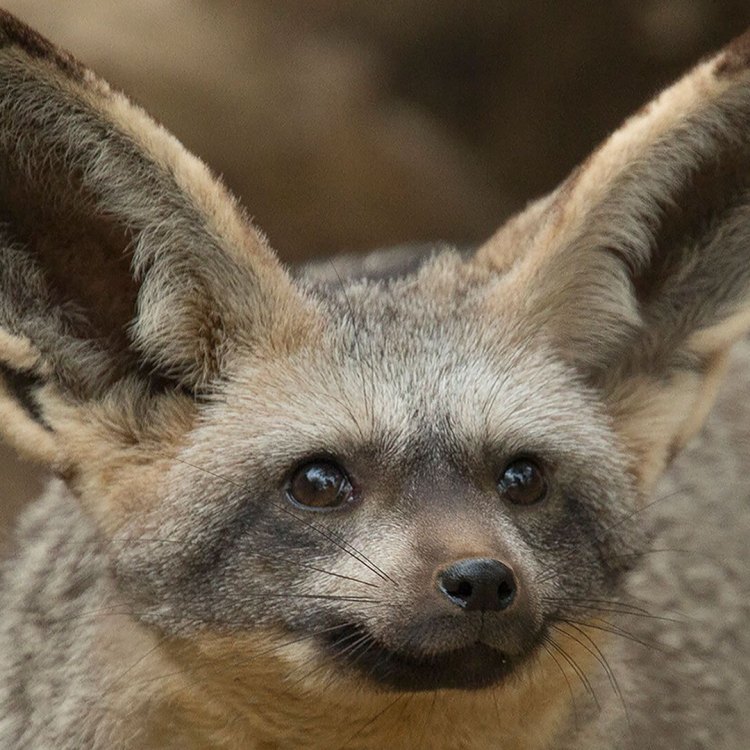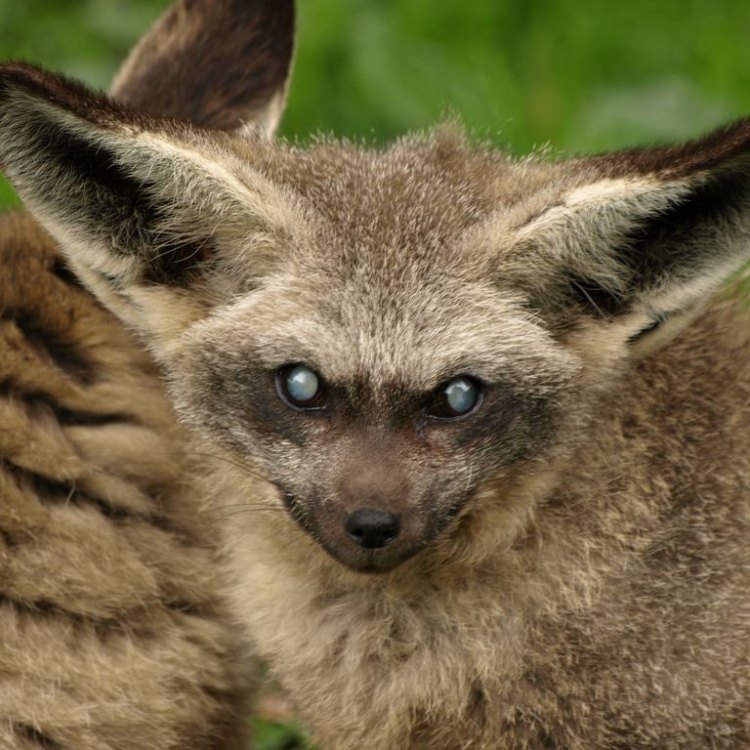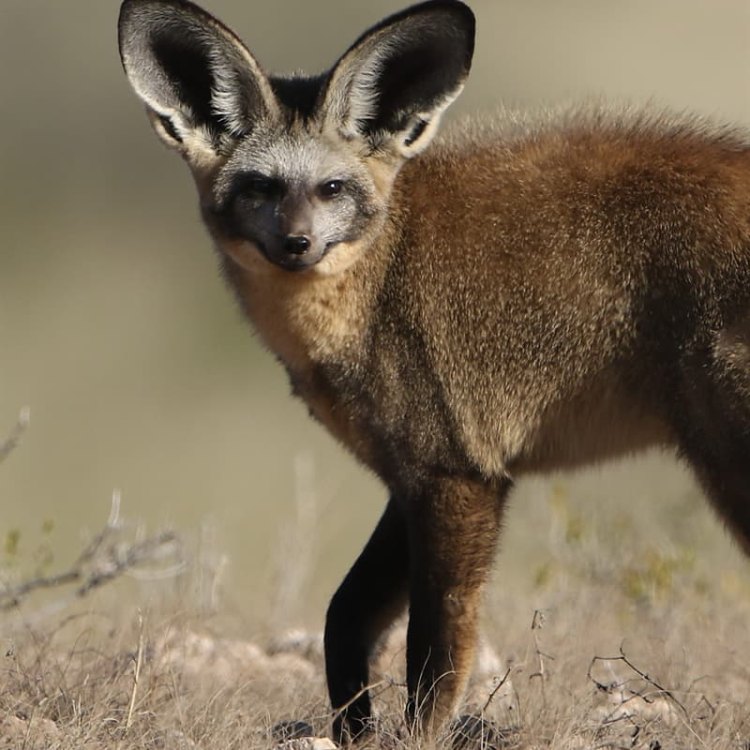
Bat Eared Fox
55 - 80 cm
Meet the Bat-Eared Fox, native to the African continent and a part of the Canidae family. These cute and curious creatures have a small and slender body shape, measuring between 55 to 80 cm in length. These foxes use their big, pointed ears to hunt for insects, making them an important part of their ecosystem. Keep an eye out for these unique and fascinating animals on your next African adventure. #BatEaredFox #AfricanWildlife #CanidaeFamily
Animal Details Summary:
Common Name: Bat Eared Fox
Kingdom: Animalia
Habitat: Grasslands and savannas
The Bat Eared Fox: Africa's Little Known Insect Eater
When we think of foxes, we often imagine the red or Arctic varieties, known for their bushy tails and cunning nature. But have you ever heard of the Bat Eared Fox? This unique species, with its yellowish-brown fur and distinctive oversized ears, may not be as well-known as its other fox cousins, but it has some fascinating characteristics that make it stand out.Unraveling the Scientific Mystery of Otocyon megalotis
The Bat Eared Fox, also known by its scientific name Otocyon megalotis, belongs to the kingdom Animalia and the phylum Chordata, which means it is an animal with a spinal cord. It falls under the class Mammalia, indicating that it is a warm-blooded animal with fur or hair and feeds its offspring with milk Bat Eared Fox. As a member of the order Carnivora, this fox is a carnivorous predator, and its family is called Canidae, which also includes other canines such as wolves, coyotes, and domesticated dogs.The Grasslands and Savannas: The Habitat of the Bat Eared Fox
The Bat Eared Fox is native to the African continent, specifically found in eastern and southern Africa. Its geographical distribution stretches across countries such as Botswana, Namibia, and South Africa. Within these countries, they can be found in areas with wide-open spaces, such as grasslands and savannas. These habitats provide plentiful food sources for these little carnivores, which we will explore in more detail later.The Unusual Feeding Method of the Bat Eared Fox
While most foxes are known for their ability to hunt small mammals and birds, the Bat Eared Fox has a rather different diet – it is primarily insectivorous. Yes, this little canid feeds mainly on insects, including ants, termites, and grasshoppers. These insects make up about 80% of their daily diet, with the remaining 20% consisting of small reptiles, birds, and eggs.But why would a fox choose to hunt insects instead of larger, more substantial prey? We have to consider the habitat in which they live – the grasslands and savannas Bull Shark. These areas do not have an abundance of large mammals, so the Bat Eared Fox has adapted to survive by feeding on insects. It has even developed specialized teeth to efficiently break through the exoskeleton of insects, making it a highly skilled insect hunter.
The Little-known Location of the Bat Eared Fox
One of the reasons why the Bat Eared Fox remains relatively unknown is its location. While it may be widespread across eastern and southern Africa, it is not often seen by humans. This is because the Bat Eared Fox is a shy and elusive creature, preferring to hunt and live in areas away from human activity. However, they are most active at night, so if you're lucky, you may catch a glimpse of them in the early hours of the morning or just before sunset.Marveling at the Unique Physical Characteristics of the Bat Eared Fox
Apart from their insect-eating habits, the Bat Eared Fox has some distinct physical characteristics that set it apart from other canids. Firstly, as its name suggests, it has large, bat-like ears that provide excellent hearing for locating insects. In fact, its hearing is so sensitive that it can hear insects moving under the ground.In addition to its oversized ears, the Bat Eared Fox has a small and slender body, measuring between 55-80 cm in length and weighing around 3-4 kg. It also has a unique coloration, with a yellowish-brown fur that helps it blend in with its surroundings in the grasslands. These physical features make it a highly specialized predator, perfectly adapted to its natural habitat.
Unlocking the Behavior and Social Life of the Bat Eared Fox
The Bat Eared Fox is a social creature, living in small groups of around 6-8 individuals. These groups consist of a breeding pair and their offspring, with the older siblings helping to care for and protect the younger ones. This cooperative breeding system helps to ensure the survival of the species in the harsh African savanna environment.But these foxes are not just social within their own groups – they also have a mutualistic relationship with mongooses. Mongooses are small mammals that are also insectivorous, and they often forage alongside bat eared foxes. The foxes use their keen sense of hearing to locate insects, while the mongooses use their strong sense of smell. In this way, both species benefit from the other's abilities, a fascinating example of symbiosis in the animal kingdom.
The Life Cycle of the Bat Eared Fox
Bat Eared Foxes typically mate during the rainy season, between December to February. After a gestation period of around 60-70 days, the female gives birth to 2-6 pups in a burrow. These burrows are usually abandoned termite mounds, which the foxes renovate to make them more suitable for raising their young.The pups are born blind and helpless, and it takes a few weeks for them to open their eyes and start exploring their surroundings. They are fully weaned off their mother's milk by three months and will reach adult size within a year. Once they reach maturity, they may leave the group to establish their own territories and begin their own families.
The Conservation Status of the Bat Eared Fox
Unfortunately, the Bat Eared Fox is classified as a near-threatened species by the International Union for Conservation of Nature (IUCN). While they are still relatively widespread, they are facing threats from habitat loss due to human development and conflict with farmers who see them as a threat to their livestock. Awareness and conservation efforts are necessary to protect their populations and ensure their survival in the future.Why We Need to Know More About the Bat Eared Fox
As with any wild animal, it is essential to understand their role in the ecosystem and the impact their extinction could have on it. In the case of the Bat Eared Fox, these little insect hunters play a crucial part in controlling insect populations, which can have a significant impact on the health of grasslands and savannas. They also help to disperse seeds, contributing to the regeneration of plant life in their habitat.Furthermore, by studying and learning more about the Bat Eared Fox, we can gain insight into the adaptations and behaviors that allow a species to thrive in a specific environment. This information can be valuable in conservation efforts not only for this species but for others facing similar challenges in the changing world.
In conclusion, the Bat Eared Fox may not be as famous as other fox species, but it is undoubtedly a fascinating creature worthy of our attention. From its unusual insect-eating habits to its unique physical characteristics and social behavior, this little known canid has captured the hearts of many nature enthusiasts. As we continue to uncover more about the Bat Eared Fox, let us also strive to protect and preserve its existence for future generations to admire and learn from.

Bat Eared Fox
Animal Details Bat Eared Fox - Scientific Name: Otocyon megalotis
- Category: Animals B
- Scientific Name: Otocyon megalotis
- Common Name: Bat Eared Fox
- Kingdom: Animalia
- Phylum: Chordata
- Class: Mammalia
- Order: Carnivora
- Family: Canidae
- Habitat: Grasslands and savannas
- Feeding Method: Insectivorous
- Geographical Distribution: Eastern and Southern Africa
- Country of Origin: Botswana, Namibia, South Africa
- Location: African continent
- Animal Coloration: Yellowish-brown
- Body Shape: Small and slender
- Length: 55 - 80 cm

Bat Eared Fox
- Adult Size: 4 - 6 kg
- Average Lifespan: 10 - 12 years
- Reproduction: Year-round
- Reproductive Behavior: Monogamous
- Sound or Call: Croaking, chirping, and yowling
- Migration Pattern: Non-migratory
- Social Groups: Small family groups
- Behavior: Nocturnal and social
- Threats: Habitat loss and poisoning
- Conservation Status: Least Concern
- Impact on Ecosystem: Insect control
- Human Use: None
- Distinctive Features: Large ears and black facial markings
- Interesting Facts: They have a specialized diet of insects and can consume large amounts of termites each night.
- Predator: Large carnivorous mammals such as lions, hyenas, and cheetahs

Otocyon megalotis
The Fascinating World of Bat-Eared Foxes: Master Insect Hunters
In the vast and diverse landscape of the African savannah, one animal stands out with its unique appearance and impressive skills - the bat-eared fox. With its distinctive features and behavior, this small fox has captured the hearts of many wildlife enthusiasts.The bat-eared fox, scientifically known as Otocyon megalotis, is a unique species of fox found in the arid and grassy regions of Eastern and Southern Africa. Also known as the "grey fox" or "black-eared fox," they are easily recognizable by their prominent ears and black facial markings PeaceOfAnimals.Com. But what makes them stand out from other fox species? Let's delve into the peculiar world of bat-eared foxes and discover their distinct features and behaviors.
Adult bat-eared foxes typically weigh between 4 to 6 kilograms, making them one of the smallest fox species in Africa. Despite their small size, they make up for it with their impressive lifespan of 10 to 12 years. Unlike other animals who have a specific breeding season, bat-eared foxes can reproduce year-round. This allows them to have continuous reproduction and maintain stable populations.
Reproduction for these foxes is a monogamous affair, with males and females forming life-long bonds. They mate every year, and the gestation period lasts around 60 days, with litters of 2 to 6 pups being born. The young are completely dependent on their parents for the first three months of their lives, after which they start venturing out on their own. This tight-knit family dynamic allows young foxes to learn survival skills and social behaviors from their parents, ensuring the continuity of the species Bigfin Reef Squid.
One interesting aspect of bat-eared foxes is their unique repertoire of sounds and calls. They have a wide range of vocalizations, including croaking, chirping, and yowling. These sounds help them communicate with their family members, especially during foraging and hunting for prey.
Unlike other mammals that migrate in search of food or better living conditions, bat-eared foxes are non-migratory animals. They prefer to stay in one area, especially if food sources are abundant. However, some studies have shown that they may relocate in response to changing environmental conditions.
These foxes are social creatures that prefer living in small family groups of 2 to 6 individuals. These groups consist of a mating pair and their young from previous litters. Generally, the older offspring help their parents take care of the young, making it a true family affair.
Behaviorally, bat-eared foxes are known to be nocturnal animals, meaning they are most active during the night. They spend their days resting in underground burrows or shaded areas, avoiding the scorching African sun. But, as soon as the sun sets, they come out of their hiding places to forage for food. They are curious and playful animals, always on the lookout for new and exciting things to explore.
Being social animals, bat-eared foxes are quite vocal during their nightly foraging trips. They use their sharp hearing and sense of smell to hunt insects like crickets, grasshoppers, and beetles, their primary food source. Interestingly, they also have a specialized diet of termites, which they can consume in large quantities each night. Studies have shown that they can eat up to 1.4 million termites in a single night. Such voracious consumption of insects has led to their positive impact on the ecosystem.
Bat-eared foxes have no known human use, unlike other fox species that are often hunted for their fur. However, they have an essential role to play in their ecosystem. As mentioned earlier, their insect-heavy diet makes them crucial in maintaining the insect population. This control helps prevent the spread of harmful insects and pests, thus being beneficial for both humans and other animals.
Despite their valuable role in the ecosystem, bat-eared foxes also face a few threats. One of the significant threats to their survival is habitat loss due to human activities such as agriculture, mining, and urbanization. These activities destroy the grasslands and disrupt the natural balance, leaving the foxes with limited food and shelter. Another threat is poisoning, mainly due to pest control efforts. As these foxes consume insects, they are also at risk of ingesting poisonous substances, leading to their deaths.
However, the conservation status of bat-eared foxes is currently classified as "Least Concern" on the IUCN Red List. This status is a testament to its wide distribution and stable population across Africa. But, it is essential to continue monitoring these creatures and take necessary conservation measures to ensure their survival.
In conclusion, the bat-eared fox is a fascinating and unique animal that has captured the fascination of many. With its large ears, black facial markings, and impressive skills such as insect control, they are truly one of a kind. Despite facing some threats, these small foxes continue to thrive in their natural habitat, making them a vital part of the African savannah. Let us continue to marvel at the beauty of this incredible species and do our part in protecting and preserving them for generations to come.

The Bat Eared Fox: Africa's Little Known Insect Eater
Disclaimer: The content provided is for informational purposes only. We cannot guarantee the accuracy of the information on this page 100%. All information provided here may change without prior notice.












